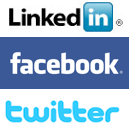Want to make money online sharing your passion?
Is this you?
“I absolutely love animals, children, cooking, gardening, investing, ______[fill-in your own]_________. But how can I make money doing it?”
George Kao recently conducted a Teleclass outlining the principles he follows to make a living by helping others do just that- put their passions to work for them.
Interestingly enough, George told us that one year ago he was an unknown in the field of Social Media thought leadership. Now, however, he has 692 fans on his Facebook Community Page — and many clients who are building successful online businesses.
@georgekao: I’m a Big Fan!
My Take-Aways from his February 2010 Teleclass:
“Making a Great Living Teaching Your Passion and Expertise”
1. “Work should be a passionate expression of ourselves”
I’m reminded of Margaret Mead’s famous discovery reported in Coming of Age in Samoa that for the indigenous people there “Work was Play and Play was Work.” Every islander was excited to get up in the morning to “get to it.”
2. “I want to make a living — not a killing”
Many internet marketing gurus train their clients using language like “getting that sale” and “making a killing.” George wants his competition to thrive along with him. Money is important, but a distant second to Love. If you come from that place, you are bound to be more authentic — and more successful. We do deserve to be paid well for being helpful.
3. “There are three facets to business success online: Social Media, Teleclasses, and Partnerships”
Building profiles and communities on Facebook, LinkedIn, and Twitter will help spread news about you and develop relationships. When people find you on these networks, make certain they know what to do next.
Teleclasses will demonstrate your expertise and gain you clients. Recorded telecasts can be turned into e-products for sale or gifts for new subscribers. Live teleclasses provide for more participation and less procrastination.
Partnerships will help you learn as you are growing your business.
4, “Position your business around personal or business drivers“
People want four basic things: (a) money, (b) relationships, (c) health, and (d) children. Each of those broad categories includes subsets, e.g. money:insurance, etc.; relationships: romance, etc.; health: fitness, nutrition, etc.; children: family, etc.
Organizations, on the other hand, want two things: more business and more efficiency. A third driver — for more progressive firms — is to provide Joy in the working environment.
If you can position your expertise/passion around any of these areas, you can build a business.
5. “When planning, think about The Client Onion”
Building a client base can follow five steps that were described as layers of an onion.
- First is the outer layer — the public, where you might offer free services to a broad base of people.
- Second are your subscribers who have recognized your value to them.
- Some of these fans will become customers who buy your standalone products, e.g. ebooks, whitepapers, programmed learning modules, etc.
- Fourth are those who will decide to participate as group clients
- Finally, your best clients will take advantage of 1-to-1 coaching services.
What’s your Passion? What’s keeping you from putting that passion to work for you?
Need a bit more coaching? Contact George and start by listening to one of his free teleclasses.
PREVIOUS STORY FEATURING GEORGE KAO: “Get Paid, Get Laid, and Don’t Die — What People Want”
DISCLAIMER: I’ve only known about and followed George for a few months, and I’m a great fan, but not yet a client. I say “not yet” because I just may take that step myself.







